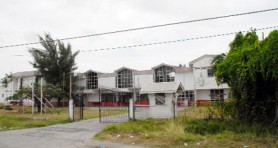The near simultaneous announcement of the launch of the GAWU Labour College and the revival of the Critchlow Labour College symbolizes the continuing deep division in the local labour movement
The recent announcement by the Guyana Agricultural and General Workers’ Union (GAWU) regarding the opening of its Labour College next month coincides roughly with the disclosure that the Critchlow Labour College (CLC) which is affiliated to the Guyana Trades Union Congress (GTUC) will be seeking to re-open its own doors shortly.

In a sense, the coincidence – if indeed that is what it is – serves to remind of the split in the local labour movement which is now more than a decade old and which has rendered labour all but irrelevant in contemporary industrial relations practice in Guyana. While GAWU is engaged in a consolidation of its fortunes under a government which it has traditionally given its staunchest support the GTUC, labour’s one-time umbrella organization, is in the throes of a cataclysmic decline.
Both the closure of the Critchlow Labour College and the division of labour were largely – though not exclusively – politically engineered, the former having had its legs swept from beneath it on account of the withdrawal by the present political administration of its state subvention. At the same time, however, the decline of both the Critchlow Labour College and the Guyana Trades Union Congress was due to other circumstances which were not of the political administration’s doing. In a sense both were calamities waiting to happen.
For more than two decades the principal preoccupation of labour’s old guard has been with perpetuating itself in power at the level of the leadership of the individual trade unions and with the manipulation of elections for the leadership of the Guyana Trades Union Congress (GTUC) in order to ensure that real authority continued to repose within a narrow cabal of veterans.
The linkage between the Critchlow Labour College and the GTUC first, through labour representation on the Board of Governors of the College and, secondly, through frequent instances of awkward and unwise intervention in the running of the College by labour officials, helped to compromise the administrative effectiveness of the organization. While the political administration’s insistence that the College meet certain criteria – particularly those relating to allowing for official scrutiny of its financial records – may have been an excuse to wrest the College from the grasp of the GTUC – the fact is that the CLC had long been weighed and found wanting since its labour-dominated Board of Governors never appeared particularly mindful of complying with the requirements of running an efficient organization.

While the role of the College in providing thousands of students with pre-qualification requirements for entry into the University of Guyana through its courses in Industrial Relations and, subsequently, through CXC courses was widely recognized, the institution, particularly continued to be bedeviled by the management problems that are not uncommon among local trade unions and which must be laid squarely at the door of the GTUC. The loss of the state subvention served to compound an already existing crisis and problems associated with meeting payments to College staff and funding the general running of the institution led to its eventual collapse.
To their discredit, some trade union leaders are yet to come to terms with the fact that the subvention issue is only part of the reason for the collapse of the college. The reason? Any such admission is bound to bare the labour movement’s own culpability in the collapse of the institution. Instead, they are far more comfortable blaming the whole sorry tale on the political machinations of the administration though that was really only part of the problem.
GAWU says that the function of its own College is to create an industrial relations training regimen for its members while expanding and intensifying its outreach programme. The latter objective will doubtfully fit in with its role as the industrial relations arm of the ruling party though. The plans of a new-look Critchlow Labour College are far less clear at this time. The re-start of the College has been the doing of the GTUC and herein lies the real problem. The fractured labour organization is broke, lacking in any coherent administrative system and facing a mountain of problems of its own, chiefly, what appears to have been the complete disassembling of its Woolford Avenue Secretariat. While the Congress appears determined to continue to fight its corner, albeit from a decidedly hobbled position, one cannot help but reflect on the state of near structural ruin into which it has fallen and whether or not, from its own considerably weakened position, it can revive the fortunes of the Critchlow Labour College.
Nowhere has the weakness of the GTUC been more prominently manifested than in its inability to mount any effective response to what appears suspiciously to be politically driven attempts to bury, once-and-for-all, the Guyana Bauxite and General Workers Union (GB&GWU) whose bargaining unit at the mostly Russian-owned RUSAL has come under threat from a foreign management that apparently refuses to countenance some aspects of workers rights including the right to take industrial action. Several weeks after RUSAL gave notice of its intention to outlaw the union the Ministry of Labour continues to refuse to intervene to resolve the problem.
The GB&GWU/RUSAL impasse is a reflection of the changed industrial relations climate in which we live as even GAWU found out during its recent dispute with GUYSUCO over pay increases. Official concern for the flowering of a healthy industrial relations climate is probably at its lowest point ever and the unions, divided as they are, lack the capacity to mount an effective response. In many respects they have only themselves to blame. By defiantly clinging to office, sometimes by means that can hardly be described as either legitimate or democratic, the old guard has compromised the infusion of new blood and, more importantly, new ideas into to labour movement. When you put this point to some of the veterans they respond that the second tier leadership is not yet up to the struggle. If that is so they are also responsible. The leadership of some of the country’s better-known labour unions including the Guyana Public Service Union, the Guyana Labour Union, the Guyana Agricultural and General Workers Union and the Guyana Bauxite and General Workers Union have all been in office for at least two decades and in some cases for much longer. That apart, none of them can lay any real claim to having presided over the enhancement of the welfare of their members and all of their leaders have had to spend time fending off challenges to their positions and criticisms of their policies.
The sad irony of all this is that the continual decline and disintegration of the labour movement is occurring at a time when effective worker representation is most needed. In both the public and private sectors employee welfare has become increasingly dependent on employer goodwill, the most patent indicator of this being continually eroding employer concern for the principles of collective bargaining and considerations of safety and health – in public sector agencies as much as in private sector ones. These days, the industrial relations regimen in most private sector entities has become the exclusive purview of Human Resources and Industrial Relations Departments and officers whose interests, understandably, are those of the employer.
There seems a greater likelihood that the GAWU Labour College will get off to its scheduled start next month than will the Critchlow Labour College by whatever timeline it has set itself. The latter has no known source of major funding and in the first instance will probably depend heavily on favours from friends if it is to muster a teaching corps. The former is well-placed not only because of its size but also because it can look to the political administration for support in ways that the Critchlow Labour College no longer can.
The two, however, while declaring their respective intentions to infuse a greater measure of training and orientation into the local industrial relations climate symbolize the further drifting apart rather than any healing of the gaping wound that continues to undermine the effectiveness of the labour movement. That is a monumental pity.
